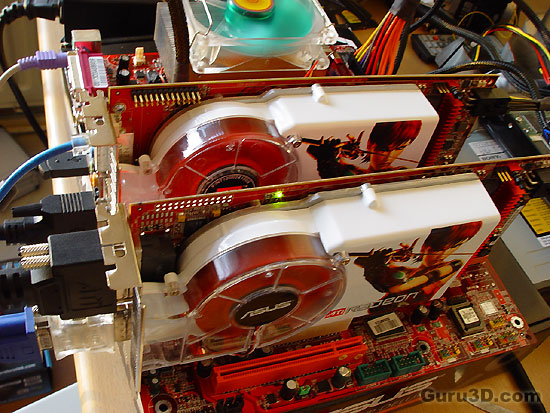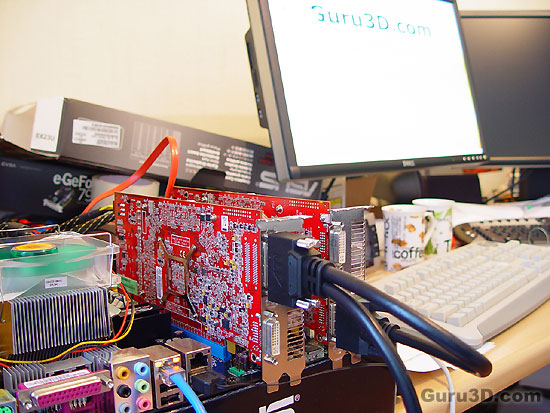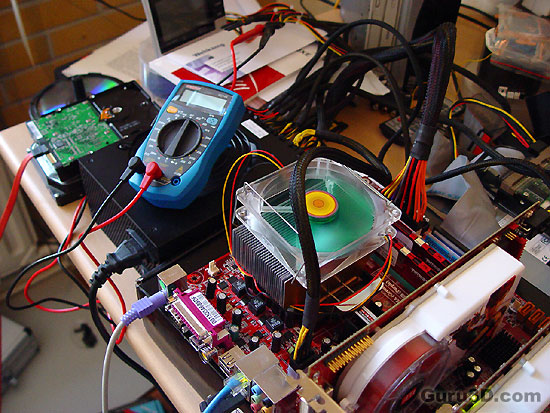Page 7

Here we see the X1900 XT cards in Crossfire. A good example of how the cards should not be connected as the upper card is the supposed to be the master card.

So the lower one, as you can see here is the "slave."

And here we have a more clear picture. Left card = master card. One cable goes to the slave card. The one cable outwards goes to your primary monitor.

And guys ... let's not talk about the mess okay ? I call this desk "organized chaos" .. our little secret okay ?
